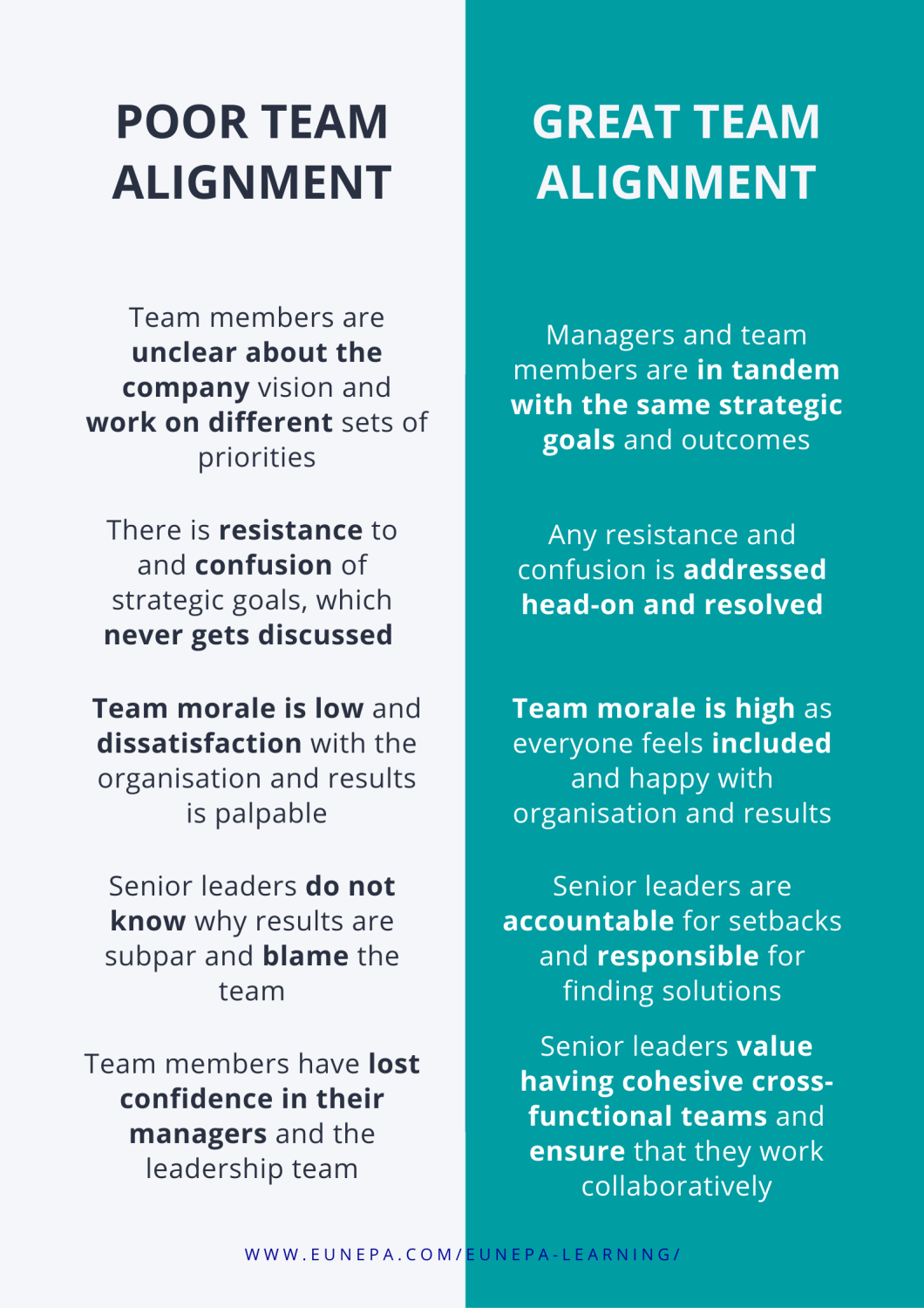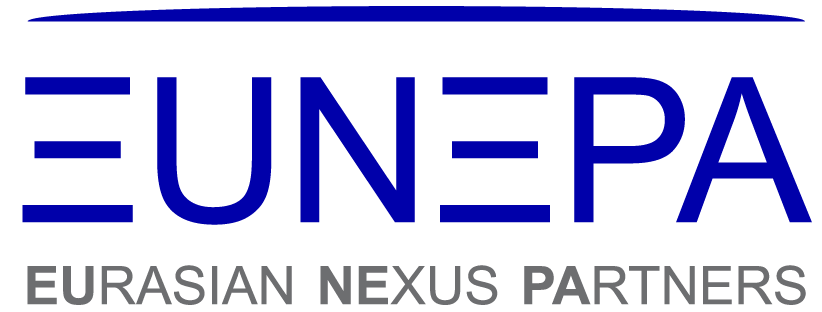10 Tips on How to Create Team Alignment
16 May 2022

Without team alignment, goals are doomed to fail and so much time and effort is wasted. This causes frustration, blame games and can ultimately lead to low morale and productivity. One of the ways to tackle this is to go back to the drawing board and review your company’s team alignment strategy.
Here is a comparison of what the cost is of poor team alignment vs. the ROI of great team alignment:

Team alignment helps to align goals, priorities and fosters a growth mindset. This in turn means an organisation achieves better productivity, higher employee engagement and retention, better communication and clearer decisions.
Here Are 10 Tips for Team Alignment
To help you plan out your team alignment strategy, here is a summary of 10 tips — drawn from our Leadership Essentials and First-Time Leader Essentials programmes — on how to achieve coherence within teams. Team coherence here means that the team is in sync with one another by supporting and strengthening each other.
- Actively share your vision and be transparent about changes. On a regular basis, leaders should actively ensure to achieve clarity on the company’s strategic goals and priorities. Express them specifically and, through open discussions, make sure that the team has understood them. Also, be explicit about any changes or adjustments and resolve any misunderstandings of key goals.
- Use a shared language. Every team member should use the same communication and a shared language regarding your vision. This ensures that everyone is on board and understands what the goals mean. This means that the goals are promoted and regularly checked by asking team members what they think the goals are and helps remedy any confusion that might exist.
- Create ownership and motivation through team buy-in. Involve team members in the goal-setting. Open discussions should be encouraged for team members to express any reservations on why an outcome involves risks or obstacles. When you have their buy-in, your team will feel more ownership and motivation to achieve the goals for the collective vision that has been established.
- Define objectives and key results. To create alignment on what exactly needs to be done, break your goals into objectives and key results (OKRs). This will help everyone work towards the same key results. OKRs is a popular method used by teams and managers to clarify objectives and set key results. There are other productivity and goal-setting tools, such as SMART and MBO, but we think that OKRs is one of the best ones around as it draws on the strengths of the former two methods.
- Define team roles to create clear responsibilities and expectations. Be clear on team and individual priorities and how they relate to the company goals, i.e. set clear tasks with concrete steps and specific deadlines. Ask the team members, how do they plan to put these into action? What will they do in changing behaviours to meet the company’s goals? Give individuals ownership of key areas of responsibility where possible.
- Regularly review the process to stay aligned. Management teams should regularly check processes and behaviours on a fortnightly or monthly basis. These regular reviews will help ensure that desired work behaviours are aligned and become a part of the company culture.
- Open communication channels. Team members and line managers should have regular scheduled meetings to openly discuss processes. Review and adapt to any strategy directives, ask questions and make suggestions to improve efficiency. Line managers should act as role models and make room for 1:1 meetings for individuals who might need extra coaching or guidance on desired work behaviours.
- Keep goals relevant and record decisions and changes. In meetings, ask open-ended questions. What can the team do better? What are the current risks their projects are facing? How can these obstacles be removed and what changes should be made to resolve challenges? Use instances of tough decisions that were made to achieve alignment with the company’s goals and priorities. Record these changes of processes and decisions to help other and new team members adopt them.
- Review team resources. Recognise available skills and how they can be optimally used. Be transparent about tasks and goals to avoid duplication of efforts. Most importantly, encourage a growth mindset to strengthen the team’s capacity to perform better. Use workflow management tools for collaboration and communication.
- Celebrate successes. Highlight stories of success in the company and give praise to put a spotlight on team and individual achievements, which demonstrate their alignment with company goals and priorities. These will go a long way in boosting positivity, motivation, growth and drive performance.
What do you notice in your organisation? Is it time to revisit your company’s team alignment strategy?
Here’s how EUNEPA can help you:
- EUNEPA Learning Courses with optional RAISE coaching, such as Leadership Essentials and First-Time Leader Essentials courses.
- Coaching – Team Coaching
- Facilitation – Team facilitation workshop
Executive Coaching

Pari Namazie
Managing Partner, Executive Coach & Leadership Facilitator

Meghla is a learner experience specialist at EUNEPA and is involved in research and content development for leadership development and learning platforms.

Meghla El Haque
Meghla is a learner experience specialist at EUNEPA and is involved in research and content development for leadership development and learning platforms.
Recent Posts
EUNEPA Top Leadership Development Provider in Europe 2022
We are thrilled to announce that EUNEPA has been selected as one of the Top 10 Leadership Development Training / Coaching Companies in Europe 2022 by Manage HR Magazine.
How to Make Your Organisation More Attractive to Millennials and Gen Z
What makes you attractive enough to the next generation of employees? Here are 7 best practices to attract and retain the new generation.
How Leaders Can Discuss Sensitive Political Topics at Work
In times of conflict, what stand do you need to take as a leader? Do you need to take a stand? What can leaders do to start a constructive conversation?



